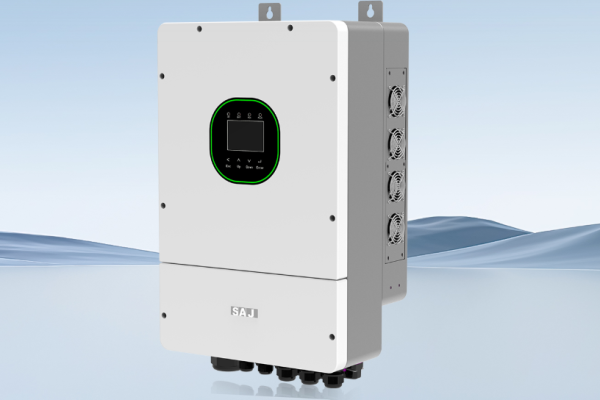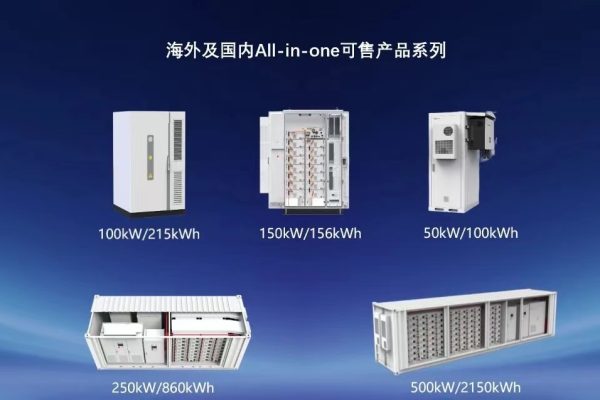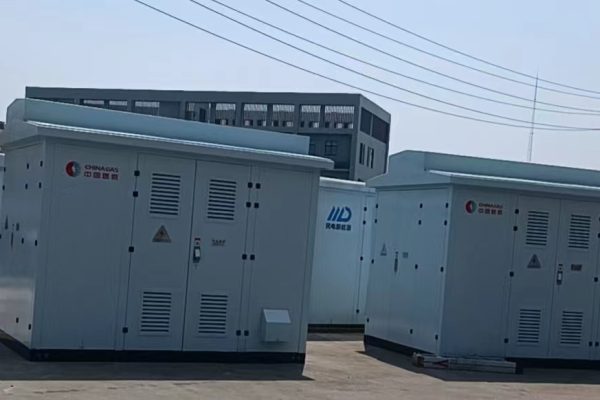Streamlining Solar + Battery Integration for Smarter Energy Systems
One Box, Many Benefits
In traditional solar + storage setups, installers often had to:
- Use two separate inverters (one for PV, one for battery)
- Manage AC-coupled vs. DC-coupled complexity
- Align charge controllers, battery interfaces, and safety logic
- Troubleshoot communication issues between mismatched devices
Today, hybrid inverters offer a smarter way forward — especially for small to mid-sized residential and commercial systems.
With one hybrid inverter, you can manage solar input, grid interaction, and battery charge/discharge — in a unified, efficient platform.
In this article, we explore how hybrid inverters simplify design, reduce costs, and help buyers build more flexible and scalable PV+storage systems.
1. What Is a Hybrid Inverter?
A hybrid inverter (also known as a multi-mode inverter) combines the functions of:
- Grid-tied solar inverter
- Battery inverter/charger
- Charge controller
- System controller and monitor
Key Capabilities:
- Accepts solar (DC) and battery (DC) input simultaneously
- Manages grid export, backup, and self-consumption
- Provides AC output to loads or grid
- Supports MPPT, battery SOC control, and inverter logic in one unit
Hybrid inverters can work in on-grid, off-grid, or grid-interactive modes — making them ideal for flexible solar+storage projects.
2. Traditional Design: Complexity and Cost
Without a hybrid inverter, a typical PV+storage design may include:
| Component | Role |
|---|---|
| PV inverter | Converts solar DC to AC |
| Battery inverter | Converts battery DC to AC |
| Charge controller | Manages battery charging |
| Transfer switch/ATS | Switches between sources |
| Monitoring gateway | Tracks multiple systems |
| Communication cables | Syncs data between devices |
This increases:
- Wiring complexity
- Installation time
- Inverter-battery compatibility issues
- System cost and points of failure
By contrast, hybrid inverters consolidate many of these components into one unit — drastically simplifying the system.
3. Benefits of Hybrid Inverters in PV+Storage Projects
✅ 1. Simplified System Architecture
- One device handles both solar input and battery output
- No need to match separate inverters or worry about AC/DC coupling logistics
- Fewer components = faster installs
✅ 2. Integrated Monitoring and Control
- Centralized data for solar generation, battery SOC, load demand, and grid status
- Easier to manage energy flows via app or cloud portal
- Enhanced user experience and remote diagnostics
✅ 3. Backup Power Without Complex ATS
- Built-in EPS (Emergency Power Supply) or islanding mode
- Seamless switchover during outages without needing external transfer switches
- Keeps critical loads powered automatically
✅ 4. Better Efficiency in DC-Coupled Systems
- Solar charges the battery before converting to AC
- Fewer energy conversions = lower losses
- Improved round-trip efficiency for self-consumption use cases
✅ 5. Lower BOS and Labor Costs
- Fewer devices to wire, mount, and configure
- Less copper used for cabling
- Reduced need for third-party controllers or protocol adapters
4. Use Cases Where Hybrid Inverters Shine
🏡 Residential Solar + Storage
- Small homes (3–10kW PV, 5–15kWh battery)
- Homeowners want solar for savings, but also want backup
- Hybrid inverter enables both with minimal gear
🏢 Small Business Backup Systems
- Offices or shops with unstable grid
- Hybrid inverter supports solar + battery + generator integration
- Smooth transitions between sources
🏕️ Off-Grid or Remote Sites
- Cabin, telecom tower, or agricultural pump
- All-in-one design simplifies transport, setup, and maintenance
- Solar + battery + genset all tied into one hybrid system
🧑🔧 Installers Needing Rapid Deployment
- Faster commissioning and fewer compatibility headaches
- Better customer service with single-vendor solutions
5. Important Design Considerations
While hybrid inverters simplify design, proper sizing and configuration still matter.
⚙️ 1. PV Input Limits
- Check number of MPPTs and maximum PV voltage/current
- Split your array accordingly to avoid clipping or overload
🔋 2. Battery Compatibility
- Ensure the inverter supports your battery’s voltage range and protocol
- LFP batteries are common; check for BMS protocol support (CAN, RS485)
⚡ 3. Load Management
- EPS output often supports limited power (e.g., 3–5kW)
- Use separate subpanel for critical loads if needed
🌐 4. Communication
- Hybrid inverters often require firmware alignment with batteries
- Use tested pairings when possible (many vendors offer compatibility lists)
6. What to Look for in a Hybrid Inverter
When sourcing hybrid inverters, evaluate the following:
| Feature | Why It Matters |
|---|---|
| MPPT Channels | For flexible PV layout (e.g., east/west roofs) |
| Battery Voltage Range | Determines compatibility with 48V, 100V, etc. |
| EPS / Backup Output | Enables off-grid or outage support |
| Communication Protocols | CAN / RS485 for smart BMS connection |
| Monitoring Interface | App/web portal for easy control and data |
| Certifications (CE, UL, etc.) | Required for project approval and safety |
Some hybrid inverters even integrate smart load management, generator input, or EV charging control — ideal for modern energy systems.
7. Business Value for System Buyers and Integrators
From a commercial standpoint, hybrid inverters provide:
- Lower total system cost
- Fewer procurement SKUs
- Shorter installation time
- Simplified after-sales support
- Better customer satisfaction
For distributors and EPCs, stocking hybrid inverters simplifies your product offering while covering more applications per model.
Hybrid Inverters Are the New Standard
In the evolving landscape of distributed energy, hybrid inverters are rapidly becoming the default choice for small and medium-scale solar + storage projects.
They offer:
- Simplicity in design
- Flexibility in function
- Cost-effectiveness in deployment
Whether you’re a system buyer, installer, or distributor, embracing hybrid inverters allows you to build smarter, safer, and more scalable energy systems — with fewer parts and more peace of mind.









